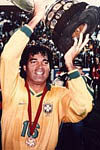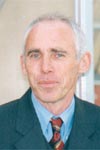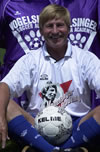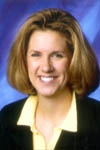Coaches Advisory Board
- Coaches Bios
The New Wave Soccer Conditioning World Class, International Advisory Board consists of some of the most Highly Respected and Knowledgeable Coaches in Soccer. These coaches will be consulted on all future program design additions to lend their expertise and insight to help best meet the strength & conditioning needs for soccer athletes of all playing levels around the World. This Program will continue to offer fresh new ideas on a yearly basis to stay on the cutting edge of soccer strength & conditioning. A soccer skills tip will be provided each month by a different Advisory Board Coach to offer a diverse, worldwide perspective on the game.
1. Bret Simon

(Head Men’s Soccer Coach-Stanford University, California.
Special Advisor for Future New Wave Soccer Conditioning Program Additions. The first coach to lead two different men’s teams[Stanford & Creighton-2 times each] to the College Cup including reaching the 2002 NCAA Title Game with Stanford & the 2000 NCAA Title Game with Creighton. 2001 NSCAA Far West Regional Coach of the Year.
2001 PAC-10 Coach of the Year after leading Stanford to the PAC-10 Championship for the first time.)2. Roger Bongaerts

(International Scout with the Arsenal FC-English Premier League. Director of Vision Sports ('The International Soccer Network' providing International Soccer Training Camps, Tours, Youth Tournaments, Coaching Education, and Player Management). Owner and Founder of European Soccer Tours. Roger is from The Netherlands where he played for RIOS �31 & Swift �36. Director of Coaching-SVC 2000 Roermond, The Netherlands, Head of Youth Development u6-u23. His playing & coaching career also has taken him to Germany, Belgium, France, Italy, England, Denmark, USA, and Australia.)
3. Travis Clarke

Travis is currently the Head Women's Soccer Coach at the University of Hawaii-Hilo. Travis is the first women's soccer coach for UH Hilo. His 2007 team ended the season with a 12-8-0 record, a 9 win improvement from the 2006 season (#2 most improved college soccer program in the country). The Lady Vulcans ended the season ranked #8 in the NCAA Far West Region Poll behind a defense that allowed less than 1 goal per game (.98 gaa). Travis is a state team ODP (Olympic Development Program) coach for Hawaii. Travis was the founder and former Director of Coaching for Atletico Madrid Premier Soccer Club in Southern California. Travis is currently a Regional Director for Team Soccer Direct Youth Camps and a Tactical Director for One Premier Soccer Schools.
3. Marcelo Goncalves

(Member of the 1998 World Cup Brazilian National Soccer Team. Owner of the highly respected Goncalves Soccer School in Brazil where several Brazil National Team Players send their own children to learn the game.)
4. Wayne Harrison

In July 2009; after 9 successful years in the USA, Wayne took up the position of Technical Director for the Youth Academy of AL AIN FOOTBALL CLUB; the most prestigious & famous professional football club in the Middle East & Asia & former winners of the Asian Champions League. (Former Professional Player with FC Blackpool[England] and Oulu Palloseura[Finnish Premier League]. Author of 5 highly praised soccer books[Reedswain Publishing] including ‘Soccer Awareness: Developing the Thinking Player’, ‘Recognizing the Moment to Play’ and the recently released, ‘The Art of Defending’-Parts 1 & 2. Author of articles for ‘Soccer Journal’-Official Publication of the NSCAA. Former Director of Coaching & Player Development for Eden Prairie Soccer Club, Minnesota, US. Staff Coach for Olympic Development Program, Minnesota. Conductor of numerous Minnesota State soccer clinics. Wayne’s annual soccer skills tips will focus on Defensive Strategies.)
5. Klaus Pabst

(Former Yugoslav Premier League Player and Coach with FC Vojvodina. Head Manager of the National Team of the Malta Football Association for 5 years.)
6. Josif Ilic

(Owner & Head Coach of the Soccer Academy Cologne in Germany. Author of the innovative soccer book, ‘Coordination-A New Approach to Soccer Coaching’ [Meyer & Meyer Sportverlag Publishing]. Author of numerous articles for the German Football Federation magazine, “Fussball Training” and their affiliated U.S. based magazine, “Success in Soccer”. Employed with the German Sports University in the Sector Soccer Education. Former FC Cologne Youth Coach, 1993-1998.)
7. Pedro Rita

(Coach Pedro is a native Brazilian from Santa Catarina. He played 10 years at the professional soccer level as well as 9 years in the amateur first division level. As a soccer player he earned 19 championships, and was named six times Most Valuable Player. He has 9 years of coaching experience( 6 years of coaching First State Division Teams in Brazil, which included winning 3 League Championships, 1993-1999). He earned NCCC Coach of the Year honors in 2000, was nominated NJCAA Coach of the Year in 2000, and was nominated NSCAA Coach of the Year in both 2001 and 2002. On February 2005 he started to work at WideWorld Sports Center as a Developmental Coaching Director where he designed a Brazilian Soccer Program for players from 2 to Adult.)
8. Hubert Vogelsinger

(Founder and Director of the Internationally Renowned Vogelsinger Soccer Academy, which is known as “Soccer Education at it’s Best”. Founding Member of the U.S.S.F. Coaching School[One of the first coaches to receive an ‘A’ Coaching License under Dettmar Cramer]. Author of 3 excellent soccer books; ‘How to Star in Soccer’, ‘Winning Soccer Skills and Techniques’, & ‘The Challenge of Soccer’. Producer of 6 soccer videos; ‘Power Basics’ and ‘Vogelsinger Soccer Video Coach Series’. Prolific Soccer Writer for National and International Soccer Magazines. Former Austrian Premier Division Player[Rapid-Wein]. Former Head Men’s Soccer Coach-Yale University. Former North American Soccer League Professional Head Coach.)
9. Mario Vossen

(Director of Youth Development[U9-U14] and Scouting Coordinator at Borussia Monchengladbach in Germany. Author of numerous articles for the German Football Federation magazine, “Fussball Training” and their affiliated U.S. based magazine, “Success in Soccer”.)
10. Tony Waiters

(President of World of Soccer LTD-World’s Leading Youth Soccer Coaching & Teaching Systems. Current President of the National Soccer Coaches Association of Canada. Director of the NSCAA Goalkeeping Institute-1997-Present. National Staff Coach of US Soccer since 1997. Member of the England National Team-1964-65. Head Manager/Coach of the Canadian World Cup & Olympic Soccer Teams-1982-86. Coach for FIFA World Youth Academy 1987-1990. Tony’s annual soccer skills tips will focus on Goalkeeper Skills Development.)
11. Lori Walker

(Head Women’s Soccer Coach-Ohio State University. Guided the Ohio State Women’s Soccer Team to their first Big 10 title in 2002. Big 10 Co-Coach of the Year-2001. Former member of the NSCAA Women’s Committee. Region II Staff Coach for the U.S. Soccer Federation Olympic Development Program since 1996. College career at the University of North Carolina included playing on 3 National Championship Teams. As a goalkeeper, lost only 1 match in her 4-year collegiate playing career, with a career goals-against average of 0.41 including an NCAA Tournament Record perfect 0.00 goals-against average. Color Commentator for the Washington Freedom of the Women’s United Soccer Association(WUSA) since 2002.)
- Coaches Tips
Developing Anticipation,Imagination,Awareness: Wayne Harrison
Developing Anticipation, Imagination, and Awareness in Your Players:
As coaches, we must teach players to establish in their minds what to do with the ball BEFORE they receive it, not AFTER. Encourage players to look before they receive the ball to be aware of their options in advance. For example, if a player only has enough time to pass the ball with one touch, he needs to know where his pass is going before the ball arrives. By improving anticipation, we help players become faster with their overall decision-making.Anticipation begins with awareness. At every instant, your players must observe where the ball is coming from and how it is traveling (in the air, on the ground, quickly, slowly, etc.). They must also have the ability to look beyond the ball, maintaining an awareness of the relative positioning of teammates and opposition players, and the direction in which each player is moving. The following coaching points will help you improve your players' awareness of their surroundings:
- Keep your head up. Avoid looking down at the ball, and consequently not observing what is around and where players are in relation to each other.
- Look before receiving. Anticipate the next pass before you receive the ball by looking over both shoulders and thinking ahead. With younger players, equate this concept to a bird on a fence looking around.
- Maintain an "open" body stance. Do this by turning "side on" (half turned) for greater peripheral vision, and by taking an angle of support that allows you to see most (if not all) of the other players on the field.
- Focus on the first touch. Relax as you receive the ball so you can control it quickly, and move the ball away from pressure on your first touch to create more space and time.
- Communicate to help the receiver. Use brief phrases like "Man on", "Turn", and "Time" so that players on the ball know whether or not they are about to be pressured by the opponent. Practice this type of verbal communication during non-competitive activities to simulate game situations.
Anticipation also requires imagination. To anticipate their future options, players must first be able to imagine how their teammates and opponents are likely to react following each touch of the ball. They must also have insight into the use of the ball and how various techniques can be employed to both control the ball and play it into different spaces. The next set of coaching points will help cultivate imagination and creativity among your players:
- Change pace. When you receive the ball, accelerate with it to get away from nearby defenders.
- Change direction. Turn with the ball on your first touch to move off at new angles. A change of direction can be especially effective when combined with a change of pace.
- Look for opportunities to take a "big first touch". Before the ball arrives, look for spaces away from both your current position and nearby opponents. Play the ball into these open spaces on the first touch to "get behind" the defense quickly.
- Move off the ball to provide support. Once you have made a pass, look to support others in possession so you can receive the ball again. Avoid standing still or "admiring your pass", since this effectively takes you out of the game. Move aggressively to support the next pass as the ball is traveling to a teammate.
- Switch the play. Let the ball run across your body to change direction and switch play, saving a touch by using your upper body to disguise your movement and the pace of the pass to help you. Recognize the available space behind you before you receive the pass.
- Take advantage of crossover runs. Instead of relying solely on the pass, create deception through takeovers and "fake-overs". Use your inside foot to exchange (or keep) the ball, and accelerate away from the crossover point as a decoy run.
- Alternate between one- and two-touch play. Change the attacking rhythm frequently so that players must always think two (or more) moves ahead of the current situation. Supporting players must quickly find angles off each receiving player so the ball can be delivered with just one touch.
- Play without communication. Challenge your players to think for themselves with no help from others, i.e. no verbal or non-verbal help (such as calls of "Man on", "Turn", clapping, or pointing).
- Keep your head up. Avoid looking down at the ball, and consequently not observing what is around and where players are in relation to each other.



